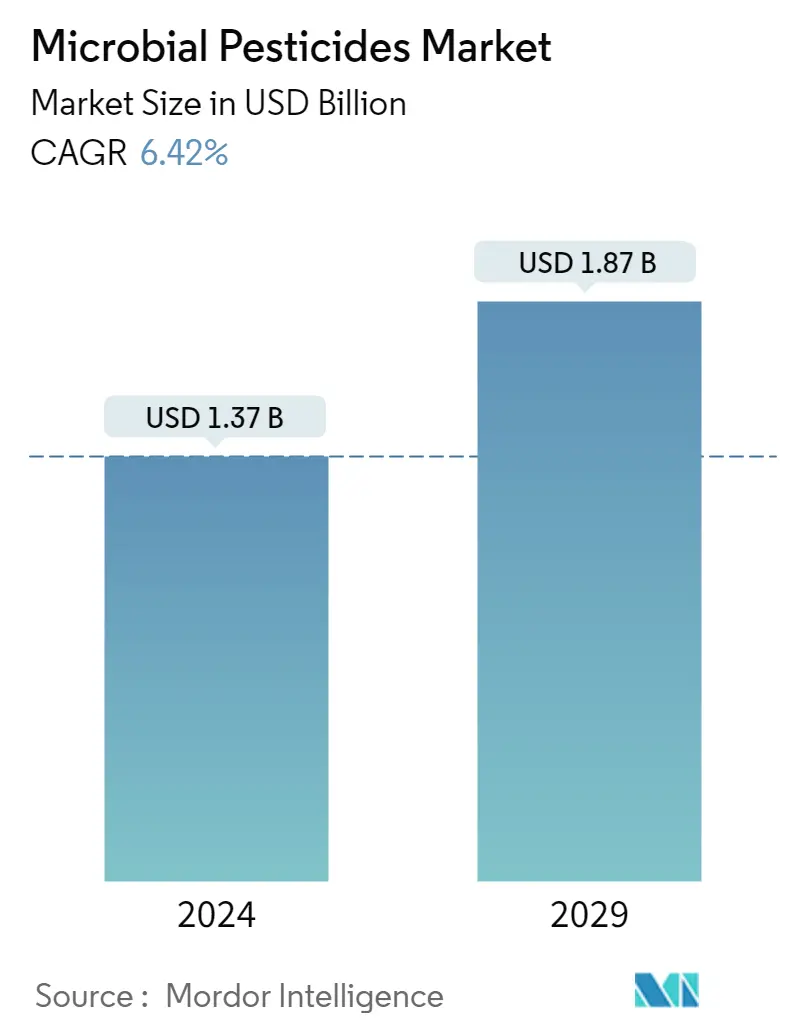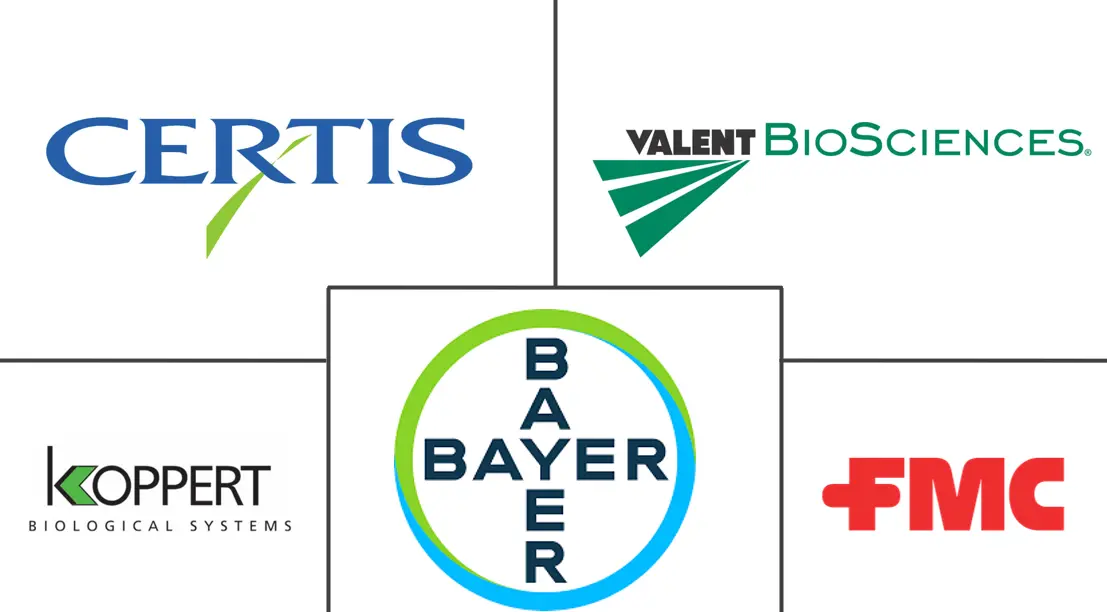Market Size of Microbial Pesticides Industry

| Study Period | 2019 - 2029 |
| Market Size (2024) | USD 1.37 Billion |
| Market Size (2029) | USD 1.87 Billion |
| CAGR (2024 - 2029) | 6.42 % |
| Fastest Growing Market | South America |
| Largest Market | North America |
Major Players
*Disclaimer: Major Players sorted in no particular order |
Need a report that reflects how COVID-19 has impacted this market and its growth?
Microbial Pesticides Market Analysis
The Microbial Pesticides Market size is estimated at USD 1.37 billion in 2024, and is expected to reach USD 1.87 billion by 2029, growing at a CAGR of 6.42% during the forecast period (2024-2029).
- While the prevalence of chemical or synthetic pesticides in crop protection is continuing, concerns about human and animal health and the environment are playing key roles in driving the growth of microbial pesticides. Several countries are adopting a stringent approach concerning the number of imports, focusing on regulating the number of pesticide residues. Due to the growing demand for food safety and quality, microbial pesticides are gaining popularity over their synthetic counterparts.
- When incorporated into an integrated pest management program (IPM), the use of microbial pesticides will reduce the need for synthetic pesticides to a very large extent without affecting crop yield rates. According to the Food and Agriculture Organization (FAO), the total area harvested in 2021 accounted for 1,465.0 million hectares, higher than the previous year with 1,442.7 million hectares due to increased demand for crop production with little microbiological and insect infestation.
- Technological change is the major driving factor for boosting agricultural productivity as arable land decreases. With higher incomes, greater knowledge, and improved communication channels, consumers in many countries demand low-cost food with high quality produced through organic methods. At the same time, the demand for food to be produced using techniques that conserve natural resources, limit environmental pressures, and pay greater attention to rural viability and animal welfare is also increasing. Therefore, governments insist on adopting new farm technologies for sustainable farming systems.
